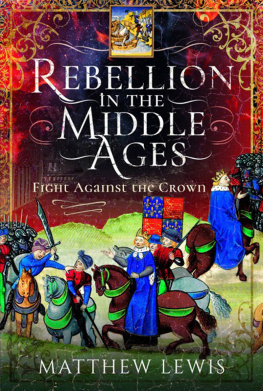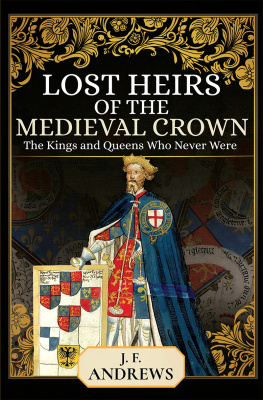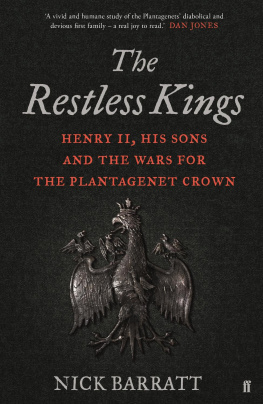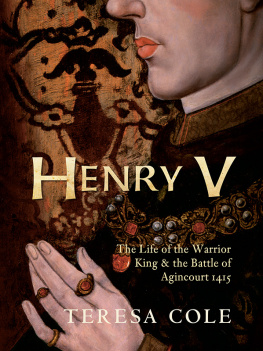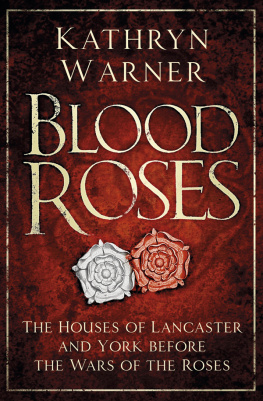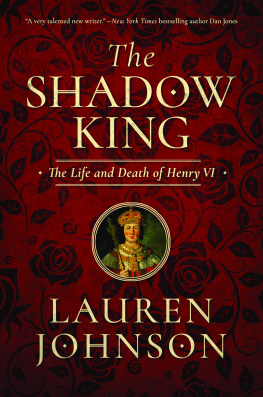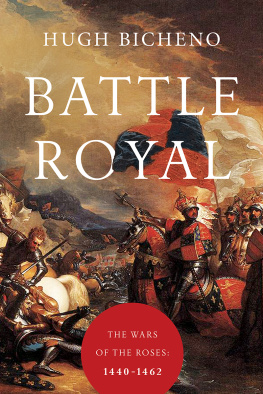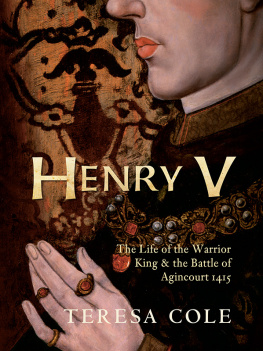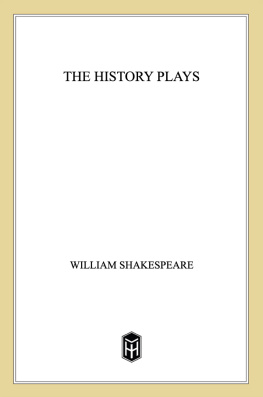The Hollow Crown
THE PENGUIN HISTORY OF BRITAIN
I: DAVID MATTINGLY Roman Britain: 100409
II: ROBIN FLEMING Anglo-Saxon Britain: 4101066
III: DAVID CARPENTER The Struggle for Mastery: Britain 10661284
IV: MIRI RUBIN The Hollow Crown:
A History of Britain in the Late Middle Ages
V: SUSAN BRIGDEN New Worlds, Lost Worlds: Britain 14851603
VI: MARK KISHLANSKY A Monarchy Transformed: Britain 16031714
VII: LINDA COLLEY A Wealth of Nations? Britain 17071815
VIII: DAVID CANNADINE At the Summit of the World: Britain 18001906
IX: PETER CLARKE Hope and Glory: Britain 19012000, 2nd edition
MIRI RUBIN
The Hollow Crown
A History of Britain in the Late Middle Ages
ALLEN LANE
an imprint of
PENGUIN BOOKS
ALLEN LANE
Published by the Penguin Group
Penguin Books Ltd, 80 Strand, London WC2R 0RL, England
Penguin Group (USA) Inc., 375 Hudson Street, New York, New York 10014, USA
Penguin Books Australia Ltd, 250 Camberwell Road, Camberwell, Victoria 3124, Australia
Penguin Books Canada Ltd, 10 Alcorn Avenue, Toronto, Ontario, Canada M4V 3B2
Penguin Books India (P) Ltd, 11 Community Centre, Panchsheel Park, New Delhi 110 017, India
Penguin Group (NZ), cnr Airborne and Rosedale Roads, Albany, Auckland 1310, New Zealand
Penguin Books (South Africa) (Pty) Ltd, 24 Sturdee Avenue, Rosebank 2196, South Africa
Penguin Books Ltd, Registered Offices: 80 Strand, London WC2R 0RL, England
www.penguin.com
First published 2005
Copyright Miri Rubin, 2005
The moral right of the author has been asserted
All rights reserved. Without limiting the rights under copyright reserved above, no part of this publication may be reproduced, stored in or introduced into a retrieval system, or transmitted, in any form or by any means (electronic, mechanical, photocopying, recording or otherwise) without the prior written permission of both the copyright owner and the above publisher of this book
EISBN: 9780141908007
Contents
List of Illustrations
Photographic acknowledgements are given in parentheses.
Zodiac Man, British Library Egerton 2572, fol. 50v (British Library)
Edward III granting the Black Prince the principality of Aquitaine (Bridgeman Art Library)
Women throwing corn to hens and chickens, British Library Additonal 42130, fol. 166v (British Library)
Virgin and Child, Eaton Bishop Church (Eaton Bishop Church/Bridgeman Art Library)
Bamburgh Castle (Corbis)
Effigy of the Black Prince, Canterbury Cathedral (Canterbury Cathedral/Corbis)
Battle of Crcy, British Library Cotton Nero E II, fol. 152v (British Library)
Effigy of Walter de Helyon, Much Marcle Church (Much Marcle Church/photograph by kind permission of David Mocatta)
Death of Wat Tyler, British Library Royal 18 E I, fol. 175 (Bridgeman Art Library)
Frontispiece to Chaucers manuscript of Troilus and Criseyde, Cambridge, Corpus Christi College, Manuscript 61, fol. IV (Master and Fellows of Corpus Christi College, Cambridge)
Wilton Diptych, National Gallery (by kind permission of the National Gallery of London/Corbis)
Richard II receiving the Earl of Northumberland, British Library Harley 1319, fol. 37v (British Library)
Henry Bolingbroke claiming the throne, British Library Harley 1319, fol. 57 (British Library)
Effigies of Henry IV and Queen Joan of Navarre on their tomb in Canterbury Cathedral (Bridgeman Art Library)
Duke of Clarence effigy, St Michaels Chapel, Canterbury Cathedral (Corbis)
Henry V with the English poet Thomas Hoccleve (Corbis)
Battle of Agincourt, Lambeth Palace Library 6, fol. 243 (Bridgeman Art Library)
The Duke of Bedford worshipping Saint George, British Library Additional 18850, fol. 256 (British Library)
Thomas Mac William Burke, MS 1440 fol. 21v (The Board of Trinity College Dublin)
Henry VI gives the Earl of Shrewsbury the sword of the Constable of France, British Library Royal 15 E 6, fol. 405 (British Library)
Manchester misericord, Manchester Cathedral (Manchester Cathedral and Manchester University Art History Department)
Kings College Chapel, Cambridge (Corbis)
Parchment illustrated with historical passages from the life of Edward IV and his pedigree, British Library Harley 7353 (Bridgeman Art Library)
Image of a clandestine marriage, British Library Royal 6 E 6, fol. 286v (British Library)
Obverse of a rose-noble of Edward IV (Bridgeman Art Library)
)
Preface
The first history book I ever bought was Dorothy Stentons volume of the Pelican History of England. Although in paperback it was an expensive treat for a poor undergraduate in Jerusalem in the 1970s. To the pleasure of buying it was added the thrill of rummaging through the shelves of the most old-fashioned of scholarly bookshops, Ludwig Mayers. Since then much has come and gone, in Jerusalem, in my life, in our book-buying habits, and in the practice of history. Like that much treasured book, The Hollow Crown aims to share historical reflection, discovery and enthusiasm with those who love and cherish history, but who have not made it their vocation. It is the product of the quarter-century of my life as a historian, but it is not for historians alone. The French have an excellent term to describe the intended audience le grand publique the great public, the many who devote some of their leisure to reading and visiting, and finally asking: How did we get here? How have we become what we think we are? How different are we from those who lived before us? What may we choose to learn and what to discard from the dizzying range of human experience which history reveals?
I say this book is not primarily for historians, or even history students, but it could not have been made without the incorporation of the intelligence, diligence and commitment of hundreds of workers in the historical fields: academic historians, historians of art, students of medieval literature, miners of archaeological remains. While writing The Hollow Crown I came to realize just how many historians there are in Britain today outside the universities: people who research and publish excellent scholarship while preserving archives, teaching in schools, guarding historic sites, curating in museums; how many continue to study and write long after retirement, or during years at home while caring for children.
The main, and perhaps sole, frustration arising from the writing of this book has been the impossibility of acknowledging debts in footnote form. I aim to do justice to the most heavily used sources in the Essay on Further Reading at the end of this book, and have listed all sources in a full bibliography which is available on-line at http://www.history.qmul.ac.uk/staff/rubinbiblio.html . My reading and research at the Cambridge University Library was graciously supported by the assistance of Colin Clarkson, Lucas Elkin, Michael Fuller, Neil Hudson, Andrew Kennedy and Morag Law.
I name here with pleasure those who generously provided material as yet unpublished or who answered queries: Caroline Barron, Jim Bolton, Chris Briggs, Christopher Fletcher, Ian Forrest, Harold Fox, Barbara Hanawalt, Katie Hawks, Richard Helmholz, Brian Patrick McGuire, Marygold Norbye, Mark Ormrod, Danna Piroyanski, Ivan Polancec, Richard Smith, Craig Taylor, Anne de Windt and Edwin de Windt. As to the many friends who helped me along the years over cups of coffee and tea in the Cambridge University Library or the British Library, at meetings and seminars and conferences they know how grateful I am, and what fun it has been to make history together.
Some people must be mentioned by name. My young colleagues, whom I have seen grow from brilliant and blushing graduate students to confident and creative scholars Anthony Bale, Chris Briggs, Christopher Fletcher, Ian Forrest, Julian Luxford, Ruth Nisse, Danna Piroyanski, Max Satchell, Phillip Schofield, David Stone, Marion Turner, Anna Whitelock have kept me alert and abreast of their exciting ways of making history. I am delighted to thank, for his formative intellectual gifts, Richard Smith, who presides over the buoyant study of British rural societies; Mark Bailey, who combines subtle understanding of landscape with the best that economic history has to offer; Paul Binski, who knows English medieval art in all its forms as no other does, and is passionate and generous too; John Watts, who, together with the late and sorely lamented Simon Walker, has brought new grace and vision to the study of late medieval politics; Mark Ormrod, who always reminds us that Britain is part of Europe, and toils at the long history of state formation; Christopher Dyer, who has made the feeding, clothing and housing of medieval British people a central historical preoccupation, with a combination of erudition and common sense; Richard Britnell, who explores the creative forces of medieval exchange and town life; Paul Strohm and David Wallace, who have taught me how to read texts historically; Ira Katznelson, who excels in using contemporary politics as a historians tool, without shame; and Rees Davies, a luminous practitioner of
Next page

